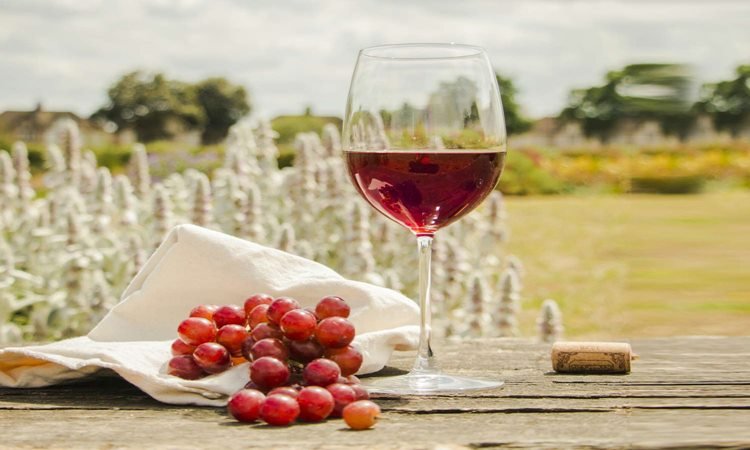Here’s 6 Fascinating Facts About Wine
FACTS ABOUT WINE – These amazing facts about wine are probably unknown to you. The public usually misses out on a lot of fascinating facts about wine, either because they are still undiscovered or no one makes the effort to dig them up.
The global influence of wine has expanded extensively, with an astounding 23.6 billion liters consumed worldwide in 2021. To put this quantity into perspective, it is akin to filling approximately 9,440 Olympic-size swimming pools with this cherished beverage.
Exploring the realm of wines, whites, and rosés reveals captivating insights, ranging from their rich historical roots to the cautious considerations surrounding wines salvaged from shipwrecks.

1.People Have Been Making Wine for Thousands of Years
The tradition of wine production has endured for thousands of years. In the period between 2007 and 2010, an archaeological team unearthed a historic winemaking facility in a cave near Areni, Armenia, dating back to approximately 4000 BCE. This remarkable find included artifacts such as a grape-crushing press, fermentation and storage vessels, ceramic cups, and preserved grape vines, skins, and seeds. Evidence of viniculture dating back even further, to around 6000 BCE, has also been documented. Commandaria, a sweet red-white dessert blend from Cyprus originating in 2000 BCE, stands as one of the oldest wines still produced today.
2. Almost All Wines Are Grown From a Single Species of Grape
Almost all wines are derived from a single grape species known as Vitis vinifera, believed to have originated in Western Asia. Through centuries of selective breeding and hybridization, approximately 8,000 grape cultivars have emerged, including well-known varieties such as Pinot noir, chardonnay, Sauvignon Blanc, and Merlot. While traditionally grown in specific climatic regions like Italy, Spain, and France, major wine-producing countries now include the United States, Chile, Australia, South Africa, and others.
3. In the 19th Century, an Insect Nearly Wiped Out France’s Wine Industry
France’s wine production faced a severe threat in the 19th century when an introduced aphid known as phylloxera nearly destroyed the entire industry. Originating from North America, this pest caused widespread damage to French vineyards, prompting the grafting of American vines, which were resistant to phylloxera, onto French vines to salvage the industry.

4. A Wine’s Terroir Can Be Legally Protected
In the 19th century, French winemakers initially resisted grafting American rootstocks onto their prized vines, fearing it would compromise the distinct flavor characteristics, or terroir, of their wines. Terroir encompasses the entire grape cultivation environment, including soil and water qualities, temperature, altitude, and their impact on the wine’s flavor and aroma. To legally safeguard a wine’s terroir in France, the Appellation d’Origine Contrôlée (AOC) system was established, categorizing wines based on their production region and quality. This system, exemplified by the regulation that Champagne must originate from the Champagne region, ensures the preservation of each wine’s unique terroir.
5. California Wines Beat French Rivals in a Blind Taste Test
In the historic “Judgment of Paris” on May 24, 1976, California wines defied expectations by outperforming revered French counterparts in a blind taste test, surprising French wine experts. The event, organized by an English wine shop owner to boost business, was expected to highlight the superiority of French wines. However, to everyone’s amazement, a Napa Valley cabernet sauvignon and chardonnay emerged as the winners, challenging the prevailing belief that only France could produce the world’s finest wines. Notably, bottles of these victorious wines are now part of the Smithsonian collection.
6. Wine Is Often Found in Shipwrecks
Throughout history, wine has been traded globally, and mishaps during its transportation by ships have occasionally occurred. Some sunken vessels have revealed fully intact wine bottles in their wreckage. Despite expert advice against consuming the contents due to potential spoilage, there are adventurous individuals who remain undeterred. In 2009, a hurricane disturbed the seafloor around Bermuda, uncovering still-sealed bottles from a Civil War-era ship; however, a panel of tasters described the recovered wine as “awful.” Similarly, Champagne retrieved from a 170-year-old shipwreck in the frigid Baltic Sea was noted to have hints of cheese and “wet hair.” Among the recently discovered samples awaiting tasting are unopened bottles from the wreck of the HMS Gloucester, which sank with the future King James II of England on board, as well as bottles lost during a British steamship’s sinking after a German torpedo attack in World War I.
READ ALSO: Game Of Thrones Cookbook Lets You Explore The Cuisine Of Westeros

